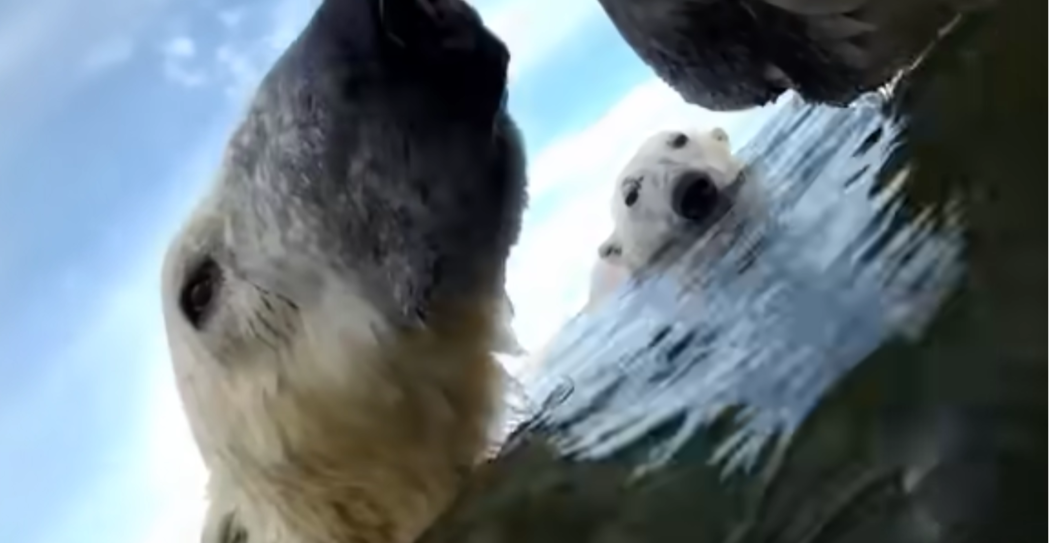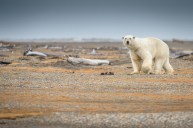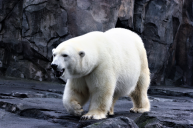While climate change affects wildlife around the world, not all species are struggling quite as badly as the polar bear population. Native to the arctic coasts of Alaska, Canada, Greenland, Norway, and Russia, polar bears rely on sea ice to hunt seals, their main source of food. But with the Arctic warming four times faster than the rest of the world over the last 45 years, the sea ice so necessary for the polar bears' survival is quickly disappearing.
Now, a new study shows just how much polar bears suffer without their sea ice. Researchers strapped recording devices to 20 polar bears in Canada's Hudson Bay, which has been experiencing increasingly ice-free winters. The cameras recorded 115 hours of footage over three years, and the results, stitched together into one video, are astounding.
The videos show the bears play-fighting in the water, swimming with seal carcasses, watching gray wolves and other bears, and chewing on antlers like dogs. They also show the resourceful creatures subsisting on bird carcasses and eating berries and grasses—a far cry nutritionally from the seals they normally eat.
These videos confirmed what scientists believed to be the polar bears' coping strategies to their increased time on land and their decreased food sources: resting to save energy or foraging for prey or food other than seals. According to the footage, some individuals rested more to conserve calories and others actively foraged to find more calories.
Unfortunately, neither of these strategies proved successful. In this three-year period, 19 of the 20 polar bears lost mass, according to data collected between when the scientists fitted the bears with their collars and when they removed them.
The camera of the one male bear who gained body mass, unfortunately, stopped recording video six days prior to his recapture. He's believed to have spent those six days along the coast, and the substantial weight gain likely means he fed on a seal or beluga carcass in the days right before recapture. Before that, he spent 1 percent of the time feeding on vegetation, 1 percent feeding on four birds, 1 percent grooming, 1 percent digging, 3 percent swimming, 13 percent walking, and 80 percent resting—an incredible insider look into what a polar bear's daily life is like.
The nearly universal loss of mass reinforces the scientists' gravest concern: Without sea ice, polar bears are at a greater risk of starvation. What more, from dining on bird carcasses, polar bears may also be at risk of catching and dying from bird flu. The first polar bear to have died from avian flu was confirmed just last month, in northern Alaska.
More and more hungry polar bears are heading inland to remote Arctic villages to find food in houses and landfills, and in turn subsisting off a diet that's far less calorie-dense than what they find on the ice. With reports of several polar bear maulings, some Alaskan towns have formed polar bear patrols to keep people safe.
Researchers estimate that the polar bear population in the Hudson Bay area has already fallen by 30 percent since 1987. Unfortunately, it's a trend that's likely to continue—and even accelerate—unless global warming is slowed.
READ MORE: New Study Warns of Massive Extinction Potential In Freshwater Fish




